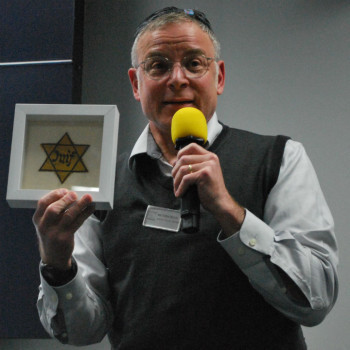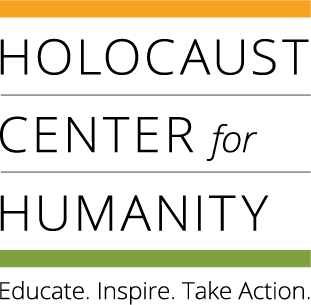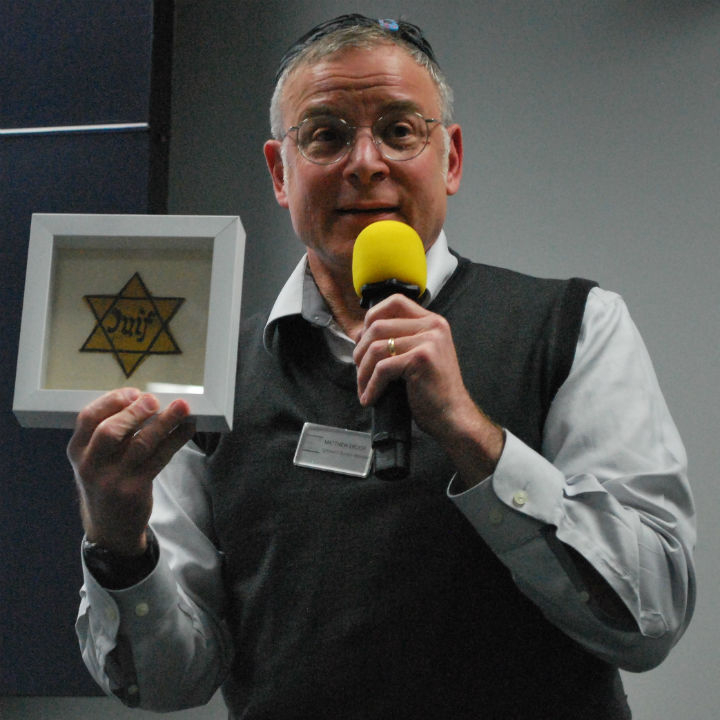 Matthew Erlich’s mother, Felicia Lewkowicz, was born in Krakow, Poland in 1923. Felicia was one of seven children, four girls and three boys.
Matthew Erlich’s mother, Felicia Lewkowicz, was born in Krakow, Poland in 1923. Felicia was one of seven children, four girls and three boys.
On March 3, 1941, the Nazis established the Krakow ghetto and Jews were required to wear armbands. Felicia and one brother were sent by the Nazis to the Krakow ghetto while her mother and other siblings were sent to Tarnow, 70 miles from Krakow. Conditions in the ghetto were terrible, with very little food and illness and diseases running rampant. Luckily, Felicia was able to get work outside the ghetto, cleaning the offices of German officers. One day, she did not return to the ghetto, escaping onto a train which would take her to Vienna, Austria. On the way, she stopped in Tarnow where she saw her family for the last time.
In Vienna, Felicia was able to acquire false identity papers and adopted the name Sophie Sterner. She worked at the Hess Hotel and the Hungarian King Hotel. Starting in the kitchen, she eventually worked her way up to housekeeping, assigned to the Hess family’s personal rooms. When a friend was caught smuggling clothes, a photo of Felicia was found among the clothes and she fled the hotel for fear of being caught.
Changing her name to Stephanie Heir, Felicia was able to find a position as a nanny and, later, at the Astoria Hotel. The authorities caught up with Felicia and she was sent to Auschwitz as a political prisoner.
Felici a arrived in Auschwitz in August of 1944 and was tattooed with the number A-25049. Shortly after her arrival, she was forced to give blood for German soldiers. To stop them from taking all her blood, a German nurse and fellow prisoner changed Felicia’s blood type on her records, and gave her bread and sausage to eat. Felicia attributes this act to helping her survive.
Felicia was transported with a group of 3,000 prisoners to Bergen-Belsen in October 1944. At the end of July 1944, there were 7,300 prisoners interned at Bergen-Belsen. By April 1945, this number had increased to 60,000. Overcrowding, poor sanitation, and lack of adequate food, water, and shelter led to an outbreak of disease. Tens of thousands perished in the first few months of 1945 and the bodies were often left in barracks for days before being removed. In March 1945, Felici a got Typhus. Her cousin, Estia, who she discovered on the transport to the camp with her, kept her alive by encouraging her to eat and get up.
Bergen-Belsen was liberated by the British on April 15, 1945. In May, Felicia and Estia were taken to a Displaced Persons (DP) camp in Lingen, Germany. In the camp, Felicia worked as a translator and met her future husband and fellow survivor, Arthur. After 6 or 7 months in the DP camp, Felicia moved to Paris, where her sister Lola was living, while Arthur completed his studies in England. Felicia and Arthur were married in England on July 3, 1948. They later moved to Canada and then the USA. The couple had four sons: Richard, Andrew, Michael, and Matthew.

